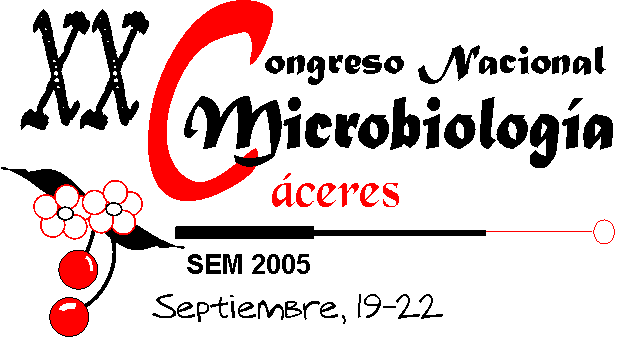

P - 119
Laboratory of Plant Physioloy, Faculty of Biology, Complutense University, Av. José Antonio Novais s/n, 28040 Madrid, Spain. E-mail: mblanchr@bio.ucm.es
Xanthomonas albilineans is a Gram negative, phytopathogenic bacterium which invades sugarcane and produces leaf scald. The disease is characterized by a fine, yellowish pencilline in parallel to the main vein in the leaf. Bacteria produce a xanthan-like polysaccharide, which occludes both xylem and phloem and leaves are desiccated. The xanthan-like polysaccharide produced by X.albilineans consisted of a basal tetramer that is repeated to form the macromolecule. This basal tetrasaccharide is composed by two molecules of glucose, one mannose rest and a final glucuronic acid. Thus, in many occasions, the ability of Xanthomonas to produce an active UDP glucose dehydrogenase (the enzyme that produces UDP glucuronic acid from UDPG) is seen as a virulence factor.
The occurrence of glucuronate rest in the polysaccharide requires the action of an UDP-glucose dehydrogenase which catalyzes the NAD+-dependent oxidation of UDP-glucose to UDP-glucuronic acid. It belongs to a small group of dehydrogenases that are able to carry out the 2-fold oxidation of an alcohol to an acid without the release of an aldehyde as intermediate. This enzyme has a wide range of functions. In plants, UDP-glucose dehydrogenase is the main enzyme in the pathway of synthesis of hemicelluloses and pectins, which are the components of newly-formed cell walls.
X. albilineans produced UDPglucose dehydrogenase in culture on sucrose. This enzyme is an unusual dehydrogenase since requires molecular oxygen to oxidise UDPG to UDPglucuronic acid. The enzyme has been purified at homogeneity. The value of pI of the purified enzyme was 8.98, that of Km for UDPglucose was 0.87 mM and 0.26 mM for NADPH. The enzyme was inhibited by UDP-glucose concentrations higher than 1.3mM. N-terminal sequence was determined as IQPYNH.